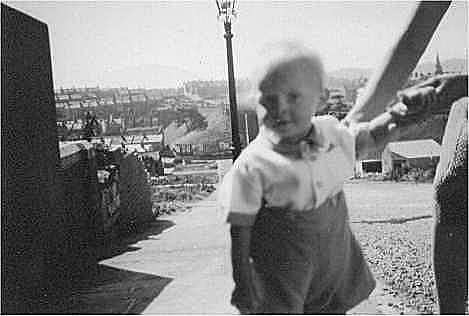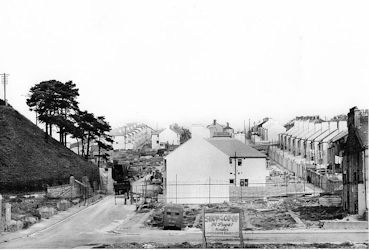|
OLD DEVONPORT
. UK |
||
|
© Brian
Moseley, Plymouth Webpage created: June 11, 2018 Webpage updated: February 05, 2023 |
||
|
KEYHAM MEMORIES 1 - INTRODUCTION Plymouth is a big City and so I probably need to explain where Keyham is for the benefit of those not familiar with it. Keyham is the area bounded on the west by the Royal Dockyard Wall between Saint Levan or North Gate and New Gate, which continues northwards as the wall of the Royal Naval Barracks, HMS Drake. The southern boundary is Saint Levan Road. The eastern boundary used to be the Southern Railway line between Ford Viaduct, which crossed Saint Levan Road, and the bridge across Wolseley Road. This boundary was obliterated in 1987, when Ford Viaduct was demolished, and replaced by new housing and a footpath. The northern boundary was where Wolseley Road joined Keyham Road. But the part that this website is devoted to is the old Keyham Barton part, south of Alexandra Park and north of Saint Levan Road. However, because life ventured outside to the Keyham proper, between Alexandra Park and Keyham Road, there will be references to that as well. For more information about what the area looked like before development started, please visit "In the Beginning". There are also some notes on "Keyham Barton" itself and the start of the "Big Building Scheme" in 1897.
The author in
Warleigh Avenue, where the rubble I was born in Warleigh Avenue and spent my first 18 years there before my family moved to another part of Old Devonport, the "Devonport New Territory" area of Pennycross, which along with part of Saint Budeaux had been taken in to the Borough in 1899. I went to school at Drake Primary and College Road Primary schools prior to going on to Sutton High School for Boys. It is almost unbelievable now to recall that when I was born the only houses in the entire top portion of Warleigh Avenue were numbers 62, 64, 66, 68, 72 and then a big gap until 90, 92, 94 and 96 on the corner with the lane. The houses on the west side of Warleigh plus those in Tamar Avenue had all been destroyed and the rubble removed. Me and my little wheel-barrow helped in the rebuilding, apparently.
Warleigh Avenue during the post-war
housing reconstruction. It might also be mentioned that when I was born it was still possible to walk along Goschen Street, Hamilton Street or Spencer Avenue to get out to Keyham Road. As far as I can trace, the first two roads were closed off first, around April 1953, but as Spencer Avenue was not mentioned as being included I assume it was still accessible from the path under the railway. Keyham Barton was a village within the City. Before the Second World War it had its own church, Saint Clement's, and I was born in the house next to the bombsite where it used to stand. It had its own primary school in College Road and two parks, Alexandra and one adjacent to Saint Levan Road. The Doctor's surgery was in Station Road. Keyham Barton had its own plentiful and varied supply of shops in Station Road, where all the daily requisites could be purchased without the need of bus or car. But it did have its own bus route, the 19, and its own railway station, overlooking that it bore the name of an adjacent area, Ford. Before the War there was also Ford Halt on the old Great Western main line by the bridge across Station Road. Keyham Station was within walking distance as well along additional motor bus services to the City Centre, Devonport, Peverell and Cattedown. It had three telephone boxes, one inside the post office in Station Road, which could only be used when the office was open, of course. The other two were at the eastern end of Station Road, near the entrance to Ford Station, and on the eastern end of Alexandra Park. I used the latter and can tell you that the box number was Plymouth 51945.
|
||

